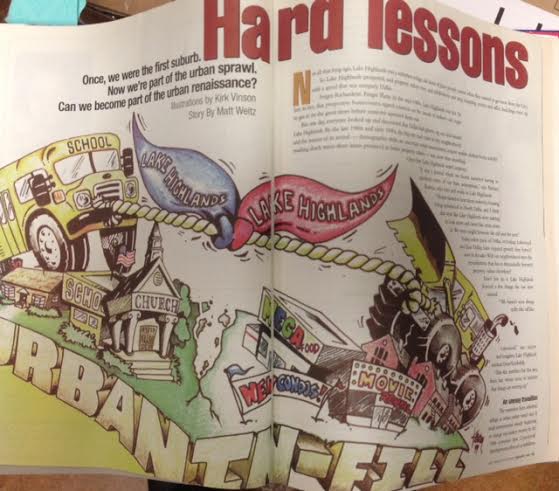Not all that long ago, Lake Highlands was a suburban refuge, the kind of place people moved when they wanted to get away from the City.
So Lake Highlands prospered, and property values rose, and subdivisions and strip shopping centers and office buildings went up with a speed that was uniquely Dallas.
Forget Richardson. Forget Plano. In the mid-1980s, Lake Highlands was hot. So hot, in fact, that prospective homeowners signed contracts on the hoods of realtors’ cars, eager to get in on the good times before someone squeezed them out.
But one day, everyone looked up and discovered that Dallas had grown up, out and around Lake Highlands. But the late 1980s and early 1990s, the big city had come to the neighborhood, and the trauma of its arrival – demographic shifts, an uncertain retail environment, a more mobile student body, and the resulting shock waves these issues produced in lower property values – was more than unsettling. Once hot Lake Highlands wasn’t anymore.
“It was a period where we found ourselves having to question some of our basic assumptions,” says Barbara Reeves, who lives and works in Lake Highlands.
“People started to hear about minority housing being introduced in North Dallas, and I think that areas like Lake Highlands were starting to look more and more like areas closer in. We were caught between the old and the new.”
Today, other parts of Dallas, including Lakewood and East Dallas, have enjoyed growth they haven’t seen in decades. Will our neighborhood miss the revitalization that has so dramatically boosted property values elsewhere?
Don’t bet on it. Lake Highlands learned a few things the last time around.
“We haven’t seen things really take off like Lakewood,” says realtor and longtime Lake Highlands resident Dean Vanderbilt.
“But the numbers for this area from late winter seem to indicate that things are starting up.”
An uneasy transition
The transition from suburban refuge to urban reality wasn’t easy. A retail environment already beginning to change was shaken severely by the 1986 economic bust. Commercial developments often act as stabilizers for surrounding residential properties, and when a large number of businesses – particularly apartments – went under during the savings and loan crisis of the Reagan years, that uncertainty began to affect public perceptions of just exactly what kind of neighborhood Lake Highlands was.
When RISD began to experience difficulty in coping with these and other changes, the area was in danger of losing one of its great attractions: the promise (and perception) of better-than-urban schools.
Scott Taylor, 37, grew up in a Lake Highlands that was the answer to urban living rather than a part of it. …






